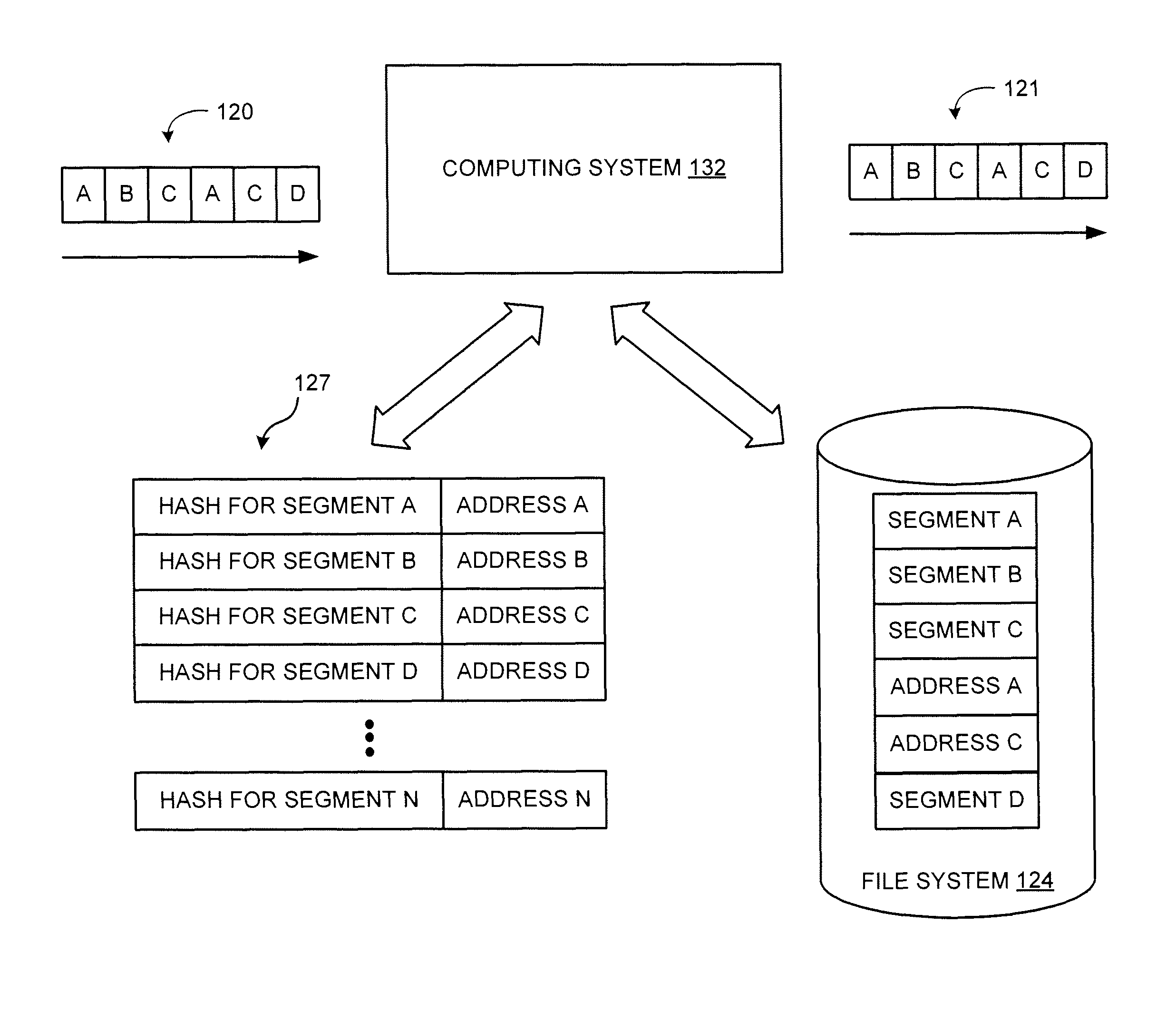Synchronized data deduplication
a data deduplication and data technology, applied in the field of data deduplication, can solve the problems of weighing 14 ton, not being able to meet the requirements of bandwidth, and being about as large as punch cards, so as to reduce bandwidth requirements
- Summary
- Abstract
- Description
- Claims
- Application Information
AI Technical Summary
Benefits of technology
Problems solved by technology
Method used
Image
Examples
Embodiment Construction
[0014]According to various embodiments, systems and methods are provided for data deduplication. Particularly, in some embodiments, techniques for performing reference table distribution and synchronization are provided. Accordingly, a reference table generated as a result of the deduplication process at a storage repository can be shared among a plurality of client systems that utilize a repository for data storage. This can be implemented to allow the client systems to perform local data deduplication before their data is sent to the repository. Likewise, this can also allow the client systems to receive deduplicated data from the storage repository. Accordingly, systems and methods can be implemented to allow deduplicated data to be transferred among a plurality of computing systems thereby reducing bandwidth requirements for data storage and retrieval operations.
[0015]In some embodiments, rather than distribute the entire reference table to each client for synchronization, a pro...
PUM
 Login to View More
Login to View More Abstract
Description
Claims
Application Information
 Login to View More
Login to View More - R&D
- Intellectual Property
- Life Sciences
- Materials
- Tech Scout
- Unparalleled Data Quality
- Higher Quality Content
- 60% Fewer Hallucinations
Browse by: Latest US Patents, China's latest patents, Technical Efficacy Thesaurus, Application Domain, Technology Topic, Popular Technical Reports.
© 2025 PatSnap. All rights reserved.Legal|Privacy policy|Modern Slavery Act Transparency Statement|Sitemap|About US| Contact US: help@patsnap.com



